In accordance with the Afe Babalola University Energy Conservation Policy, which was reviewed in 2024, and as part of the ongoing Energy and Utility Campus Master Planning efforts, the Directorate of Project and Physical Planning, in collaboration with the Department of Works and Services, is upgrading all existing buildings. The goal of these upgrades is to make them climate-smart, energy-efficient, and to ensure they achieve the highest LEED (Leadership in Energy and Environmental Design) ratings.
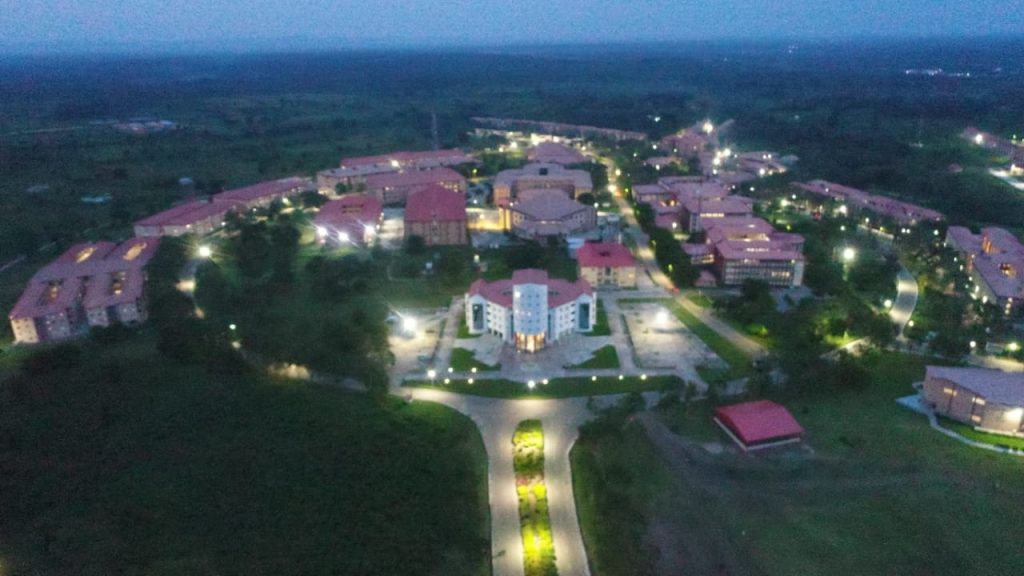
In 2024, the University has significantly ramped up its commitment to sustainability by implementing LED lighting systems across all new buildings on its various campuses. This initiative reflects the University’s dedication to energy efficiency and environmental responsibility.
As part of this effort, existing lighting systems are being systematically upgraded to LED technology in a phased manner. This year marks a notable milestone, as all remaining incandescent bulbs in the residential buildings have been successfully replaced with energy-efficient LED bulbs. This transition not only reduces energy consumption but also enhances the quality of light in these spaces.
In addition to the upgrades in residential areas, the University is also converting street and security lighting to solar-powered systems, thereby utilizing renewable energy sources to improve safety and reduce electricity costs. Furthermore, in facilities that were not updated in 2023, the University has installed 25W and 9W LED lamps in the remaining toilets, hostels, and restaurants, ensuring that all areas are benefiting from modern lighting technology.
To further promote energy efficiency, the University is incorporating natural air-cooling systems and maximizing the use of natural lighting in its new architectural designs. These strategies aim to minimize overall energy consumption in campus buildings, creating a more sustainable and comfortable environment for students, staff, and visitors alike.
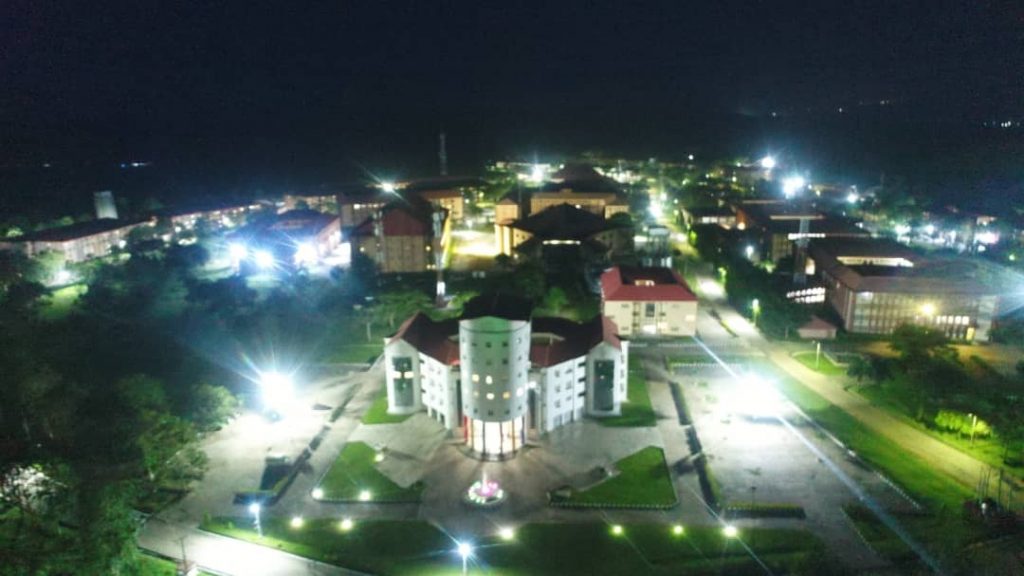
In 2024, Afe Babalola University continued to implement its strategy to reduce utility bills significantly, particularly in light of the average monthly electricity cost of approximately thirty-five million Naira. Improving the energy efficiency of all buildings on campus is essential and critical for this effort.
ABUAD-University-Energy-Conservation-Policy-Reviewed-2024The Directorate of Projects and Works & Services Department of the University reviewed and assessed the structure and policies established in 2020 and reviewed in 2021, 2022, 2023, and 2024 to ensure full implementation and compliance by stakeholders. The key initiatives include:
- Metering: Installing meters in all new and existing buildings—such as offices, student residences, staff housing, auditoriums, and commercial centers—to measure and monitor energy consumption.
- Lighting Upgrades: Phasing out high-energy consumption lighting fixtures in all existing buildings and using only LED lighting in new constructions. This change has been proven to reduce energy usage by at least 99% in each building.
- Smart Controls: Gradually converting the university’s conventional streetlights and other occasional-use spaces, like conference and seminar rooms, to smart automatic control systems. This transition will help intelligently manage streetlights and reduce energy consumption.
- Ventilation Design: Choosing appropriate ventilation designs to improve air quality and reduce heat, thereby decreasing the energy required for cooling.
It’s important to note that monthly energy expenses have been reduced by another 93% in the last quarter of 2023, compared to a reduction of 75% in the third quarter of 2021. This progress is attributed to the continuous improvement in energy consumption and the efficiency strategies, policies, and plans adopted by Afe Babalola University and reviewed in 2024.
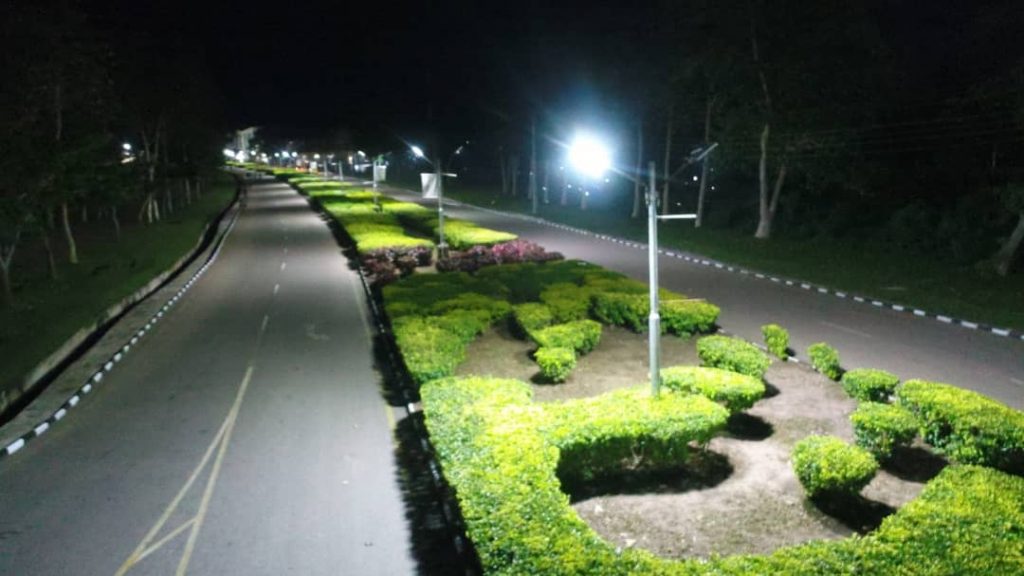
2024 ABUAD Energy Conservation and Waste Management Report
In 2024, the Directorate of Works and Services conducted an energy audit, no significant increase in energy generation through the University Independent Power Project. This project utilizes renewable sources such as natural gas, hydro power, and solar energy, resulting in a total generation of 5.85 gigajoules.
In January 2024, the university reduced its energy consumption to 35% of the total energy generated (5.85 gigajoules), marking a sharp decrease compared to January 2023. In January 2023, energy consumption was high, at 31% of 5.85 gigajoules (equivalent to 1.8135 gigajoules). This was a significant improvement from nearly 100% consumption in January 2022 and 2023. The high consumption levels in 2021 and 2022 as well as low percentage in 2023 were mainly due to the use of energy-intensive bulbs, fluorescent lights, and the continuous use of electrical appliances by students and staff. Improper management of high-powered fans and air conditioners during non-class hours, along with the frequent use of energy-consuming devices during daylight, contributed to energy wastage and increased greenhouse gas emissions.
The successful implementation of the University’s Energy Conservation Policy has led to a substantial reduction in energy waste. This policy mandates that existing buildings switch to LED lighting, which consumes less power and emits fewer pollutants, while new buildings are also required to use LED lighting. Furthermore, the adoption of energy control devices and awareness campaigns on energy conservation have significantly decreased energy waste. The percentage of energy reduction improved from 50% in December 2021 to approximately 78% in December 2022, an impressive 95% in December 2023 was totally reduced to almost 100% in 2024. This progress has created more opportunities to redirect energy resources to power neighboring local communities.
It is important to note that the primary source of energy waste has been the use of traditional bulbs and high-powered electrical devices. As of December 2021, these accounted for approximately 65% of energy waste. This figure decreased to 20% in December 2022, dropped to just 5% in December 2023 and further reduced to 0.01% in 2024.
In 2024, the Directorate of Works and Services conducted an energy audit, revealing no significant increase in energy generation through the University Independent Power Project. This project utilizes renewable sources such as natural gas, hydro power, and solar energy, resulting in a total generation of 5.85 gigajoules.
In January 2024, the university reduced its energy consumption to 18% of the total energy generated (5.85 gigajoules), marking a sharp decrease compared to January 2023. In January 2024, energy consumption was high, at 17% of 5.85 gigajoules (equivalent to 0.9945 gigajoules). This was a significant improvement from nearly 100% consumption in January 2021. The high consumption levels in 2021 were mainly due to the use of energy-intensive bulbs, fluorescent lights, and the continuous use of electrical appliances by students and staff. Improper management of high-powered fans and air conditioners during non-class hours, along with the frequent use of energy-consuming devices during daylight, contributed to energy wastage and increased greenhouse gas emissions.
The successful implementation of the University’s Energy Conservation Policy has led to a substantial reduction in energy waste. This policy mandates that existing buildings switch to LED lighting, which consumes less power and emits fewer pollutants, while new buildings are also required to use LED lighting. Furthermore, the adoption of energy control devices and awareness campaigns on energy conservation have significantly decreased energy waste. The percentage of energy reduction improved from 50% in December 2021 to approximately 78% in December 2022, reaching an impressive 95% in December 2023 and almost 0.01% in December 2024. This progress has created more opportunities to redirect energy resources to power neighboring local communities.
It is important to note that the primary source of energy waste has been the use of traditional bulbs and high-powered electrical devices. As of December 2021, these accounted for approximately 65% of energy waste. This figure decreased to 20% in December 2022, dropped to just 5% in December 2023 and further reduced to 0.01% in December 2024.
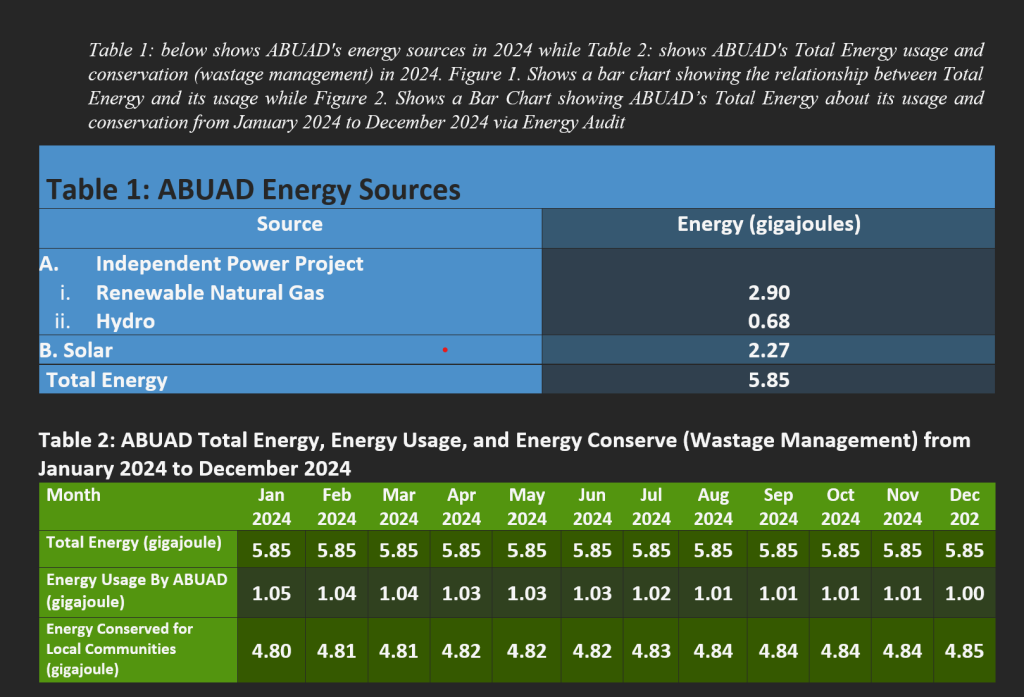

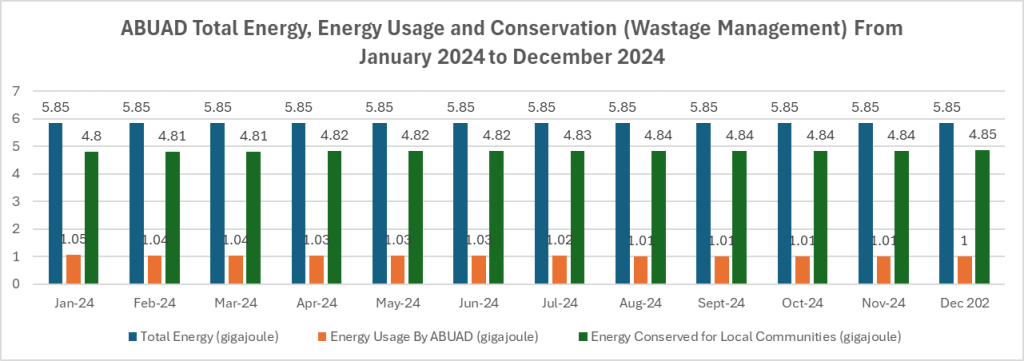
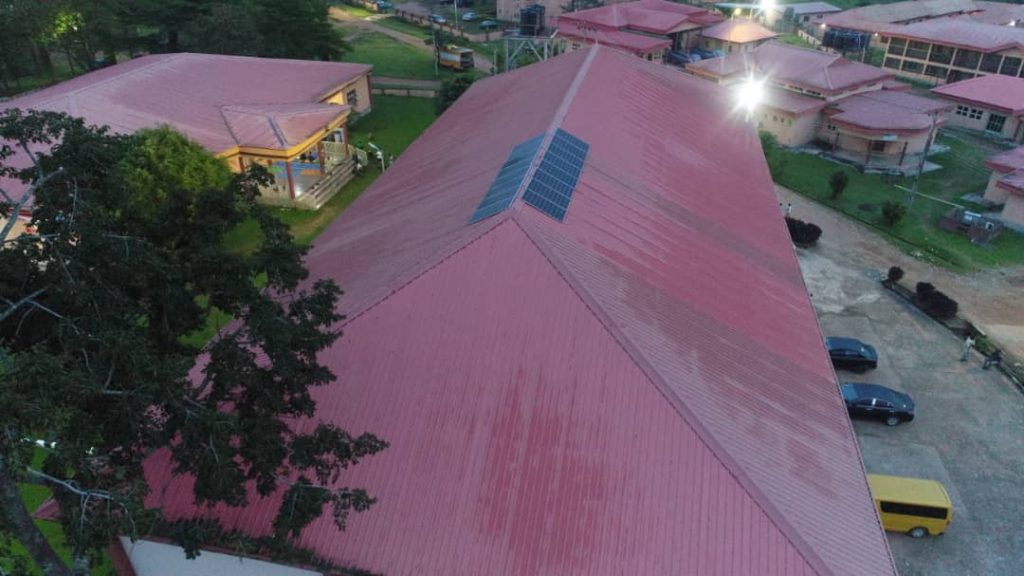
Related Posts:
https://www.igi-global.com/chapter/energy-audit-and-reliability-analysis-of-afe-babalola-university-power-distribution-system/256676

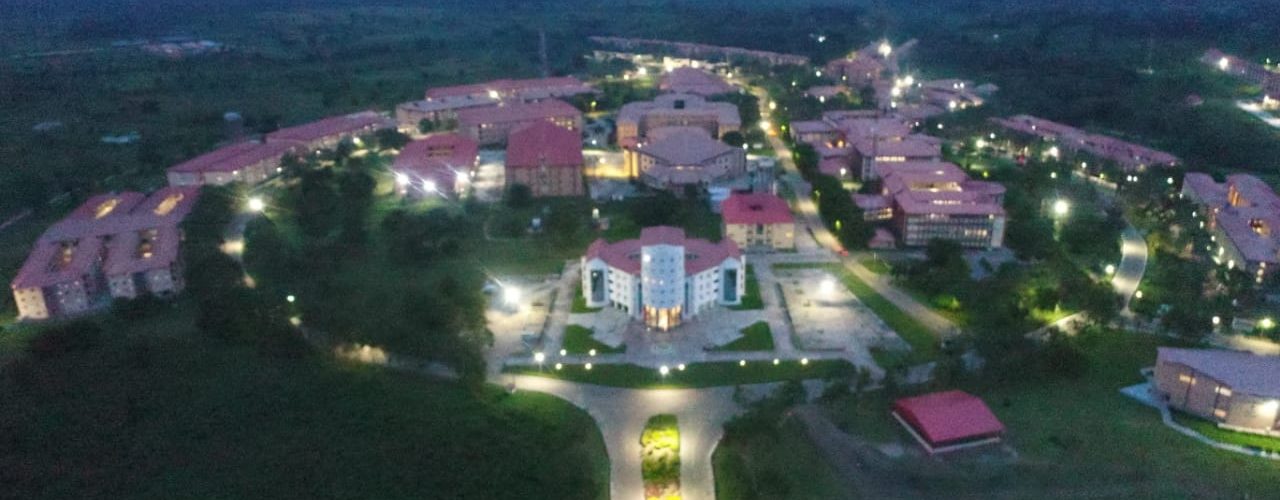

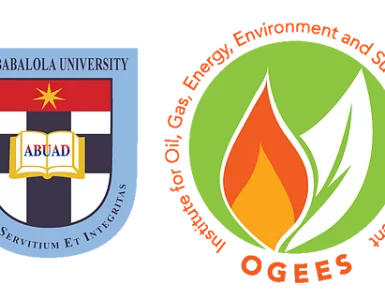













Add comment